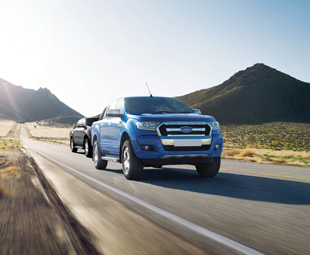Risky business

If we can practise risk management in the boardroom, we should also be able to do it when driving on the road
Have you heard of risk management? It’s one of those ubiquitous corporate buzzwords in the safety, health, environment and quality (SHEQ) and occupational health and safety (OHS) spheres.
Wikipedia describes risk management as: “The identification, assessment and prioritisation of risks followed by coordinated and economical application of resources to minimise, monitor, and control the probability and/or impact of unfortunate events, or to maximise the realisation of opportunities.”
That’s quite a definition, but then, this is quite serious business… You get risk practitioners, risk auditors, risk analysts, risk assessors, risk advisors, et al – who all have the goal of ensuring a company’s employees finish the work day incident free, so that they can go home to their families.
What happens then? After the inductions have been undertaken and the SHEQ officials have chalked up another successful day of “zero harm”, and after the risk auditors/analysts/assessors have concluded their audits/analysis/assessments and submitted their recommendations on how to make the workplace even more OHS compliant, do all the company’s employees take these skills and recommendations home with them?
Call me a cynic, but I think they get hung up with the hard hats and high-vis jackets – at least when it comes to the vast majority.
You see, this time last year I wrote about our trip to the annual Nampo Harvest Day, during which an inattentive driver came close to causing an accident with our vehicle on one of the very poor Free State roads. And those roads are extremely poor! At one point the GPS suggested routing us via a dirt road … but I digress…
Heading out to Nampo 2017 (you can read Anlerie de Wet’s report on page 22), any company’s risk advisor would probably be displeased with the fact that its employees were to traverse them.
Negotiating the minefield of potholes, dips, bumps, missing or loose tar and poor patchwork (what little of it there was) required reduced speed, intense concentration and unwavering patience.
This did not stop countless drivers from speeding, losing patience and overtaking – in some cases, multiple vehicles at a time. Most of these drivers were in bakkies (one even had children bouncing around unstrapped) and quite a few were wearing corporate branding.
That’s what made me wonder: if most companies today are so risk averse and try to instil a culture of “reduced risk” and “zero harm” in their employees, why do these employees forget all they have
learnt when they leave the premises? Why do they feel it’s acceptable to drive at more than 140 km/h on very poor rural roads with countless risks around them?
Hit a pothole, burst a tyre or lose control… Swerve at the last minute to miss said pothole and sideswipe the guy impatiently trying to overtake you… What about the farm animals, slow-moving trucks over a blind rise, tractors crossing from concealed side roads?
All these were present, real risks … yet – as per our definition – there was no identification, assessment and prioritisation of risk, followed by coordinated application of resources to minimise, monitor and control the probability and/or impact of unfortunate events…
The “it’ll never happen to me” mentality prevails. Maybe it’s about time South African corporates expanded risk management to the roads.
Published by
Focus on Transport
focusmagsa




